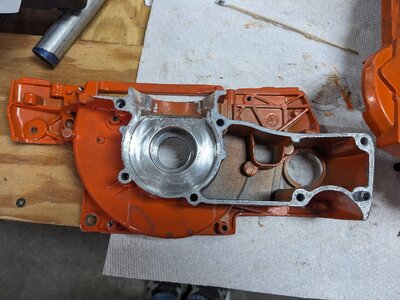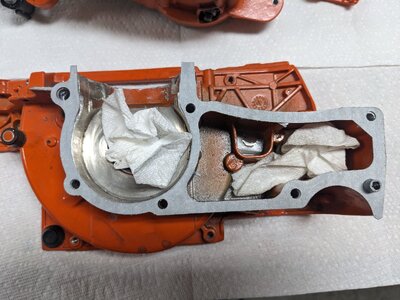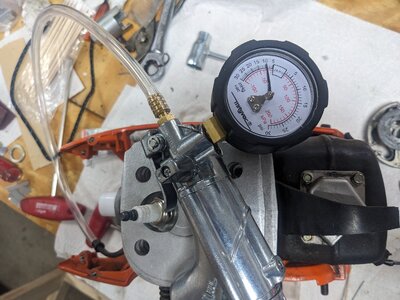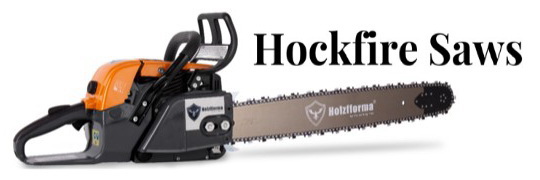You are using an out of date browser. It may not display this or other websites correctly.
You should upgrade or use an alternative browser.
You should upgrade or use an alternative browser.
Hybrid clonesaw 365 with a 390 topend - aka the "86'r from youtube"
- Thread starter upstateamish
- Start date
Woodwackr
Here For The Long Haul!
- Local time
- 10:57 AM
- User ID
- 28333
- Joined
- Jan 18, 2024
- Messages
- 3,511
- Reaction score
- 16,290
- Location
- ID
Put it together and see what the comp # is. Might be good enough to at least test.yeah, looking at it, I'm not super confident but I figure no harm in testing it out. At the very least will let me do the leak down test. If it passes see how (or if) it runs, if it doesn't a get a new top end and the current one can go on the trophy shelf of "learning experiences.."
Woodwackr
Here For The Long Haul!
- Local time
- 10:57 AM
- User ID
- 28333
- Joined
- Jan 18, 2024
- Messages
- 3,511
- Reaction score
- 16,290
- Location
- ID
Hmm, maybe too much case material removed to get a good seal?Got things back together and pressure vacuum tested
Good news: PTO side seal now doesn't leak!
Bad news: From what I can tell, the area between the crank & the oil tank is where the leak is... so looks like splitting the case to redo the gasket may be in the cards.
So, still have a small leak but no longer at the seal crank bushing and it holds about 5lbs of vacuum about 4-6(ish) seconds where it wouldn't hold anything prior. Letting the threebond set overnight and tomorrow see if it'll fire up. Without trying to start it, just pulling things over it seems to have fairly decent compression (but the 2 stroke oil used for assembly is still there, so I expect that)
View attachment 454624
upstateamish
Super OPE Member
- Local time
- 12:57 PM
- User ID
- 17558
- Joined
- Jul 13, 2021
- Messages
- 119
- Reaction score
- 430
- Location
- upstate new york
Ah, right! Sorry, good point and thanks for the correction. I've edited my post and noted it holds at 5 on the gauge.The vacuum side of the gauge is in inches of mercury, not psi. 2 inches of mercury to 1 psi. That's 2.5psi for what its worth.
My compression gauge is buried somewhere, I'll see if I can dig it up to test... but my plan is to try just see if it'll fire up.Put it together and see what the comp # is. Might be good enough to at least test.
Maybe. While it is pretty thin, my guess is the gasket shifted/or tore (I was having some challenges getting things together and figuring out where the shims should be placed. I suspect taking things apart putting back together was that may have occured)Hmm, maybe too much case material removed to get a good seal?
Woodwackr
Here For The Long Haul!
- Local time
- 10:57 AM
- User ID
- 28333
- Joined
- Jan 18, 2024
- Messages
- 3,511
- Reaction score
- 16,290
- Location
- ID
I wonder if there is a limit to how thin the wall can be and still hold a gasket or sealer.Ah, right! Sorry, good point and thanks for the correction. I've edited my post and noted it holds at 5 on the gauge.
My compression gauge is buried somewhere, I'll see if I can dig it up to test... but my plan is to try just see if it'll fire up.
Maybe. While it is pretty thin, my guess is the gasket shifted/or tore (I was having some challenges getting things together and figuring out where the shims should be placed. I suspect taking things apart putting back together was that may have occured)
upstateamish
Super OPE Member
- Local time
- 12:57 PM
- User ID
- 17558
- Joined
- Jul 13, 2021
- Messages
- 119
- Reaction score
- 430
- Location
- upstate new york
Looking back through my pics, this is how thin it is currently, which is why I think I must have shifted/tore the gasket. The surface wall between the crank area and oil tank isn't 'that' much thinner than the rest of the case edge.I wonder if there is a limit to how thin the wall can be and still hold a gasket or sealer.

I suppose the sealent is probably set and the neighbors should be up by now. I'm going to go see if it runs and make some decsions around next steps.
upstateamish
Super OPE Member
- Local time
- 12:57 PM
- User ID
- 17558
- Joined
- Jul 13, 2021
- Messages
- 119
- Reaction score
- 430
- Location
- upstate new york
Ok, it seems to run (a big win) not as bad as I thought it might be, does not have as much compression as it did (not surprising)
- 1 turn out on the high / low jets.
- no oil in the tank (probably pulling some air)
going to throw a bar and chain on it, oil in the tank and see what happens in the wood.
upstateamish
Super OPE Member
- Local time
- 12:57 PM
- User ID
- 17558
- Joined
- Jul 13, 2021
- Messages
- 119
- Reaction score
- 430
- Location
- upstate new york
Recorded some poorly placed video off a stump of it cutting ... here's some unedited full length (11+/- min) of cuts, stalls, adjusting things but dropped the audio gain down so if you're like me wearing headphones it doens't blow your ears out.
As you can see we've got blue smoke after idling when hitting the throttle, I think that's bar oil so the case will need to be split to fix the gasket. At least I think that's the bar oil getting burnt up... but that's a positive right? (at least it's not running lean.
Also attempted to use my fast tach (which is seems to be freaking out for some reason and resetting if I get to close to the spark plug, maybe the batteries dying on it? maybe I need a better tach) anyway, max RPM in the cut that I saw (if it's to be believed) is 10,635 I show that at the 4:36 mark. (not really much to see)
Just from the little bit of cutting I've done there this thing seems to be a beast! Leaning pulling up on the cut and
Started gathering parts for prototype number 3. All aftermarket parts again in the interest of saving my wallet pain
Mad Professor
Pinnacle OPE Member
- Local time
- 12:57 PM
- User ID
- 14251
- Joined
- Oct 21, 2020
- Messages
- 479
- Reaction score
- 2,078
- Location
- Northeast USA
Curious what did you set the clearance at when you turned the piston? Also did you taper it like the factory ones? The ones I've measured have ~0.005-6" taper.
upstateamish
Super OPE Member
- Local time
- 12:57 PM
- User ID
- 17558
- Joined
- Jul 13, 2021
- Messages
- 119
- Reaction score
- 430
- Location
- upstate new york
Curious what did you set the clearance at when you turned the piston? Also did you taper it like the factory ones? The ones I've measured have ~0.005-6" taper.
Good question. The piston clearance is something I don't have agood method to measure at the moment (or realistically set.) I was attempting to get some squish band setting with the stock 390 piston and sand paper on top of it. After that experience I decided that figuring out a better method to cut the squish band is on my list (e.g. I'll have to buy or build a mandrel to do it.)
upstateamish
Super OPE Member
- Local time
- 12:57 PM
- User ID
- 17558
- Joined
- Jul 13, 2021
- Messages
- 119
- Reaction score
- 430
- Location
- upstate new york
Tore it apart tonight. Found that the case bolts were slightly loose which probably contributed to the oil leak.
Here's the rough thickness between the crank case and the oil tank half

Trimmed the gasket down to fit the case profile resealed everything and we'll see if it holds a pressure/vac test once the threebond sets up


Here's the rough thickness between the crank case and the oil tank half

Trimmed the gasket down to fit the case profile resealed everything and we'll see if it holds a pressure/vac test once the threebond sets up


Woodwackr
Here For The Long Haul!
- Local time
- 10:57 AM
- User ID
- 28333
- Joined
- Jan 18, 2024
- Messages
- 3,511
- Reaction score
- 16,290
- Location
- ID
After the fact, but…did you pull the alignment pins and lap the case halves before assembly?Tore it apart tonight. Found that the case bolts were slightly loose which probably contributed to the oil leak.
Here's the rough thickness between the crank case and the oil tank half
View attachment 454758
Trimmed the gasket down to fit the case profile resealed everything and we'll see if it holds a pressure/vac test once the threebond sets up
View attachment 454759
View attachment 454760
China case, doubt they are flat
Outback
Super OPE Member
I usually use threebond on the case gasket. I make sure the bolts are clean with some gas and the air compressor. A little blue thread locker on the case bolts. And I go as tight as my wrists can handle with a t wrench. I've never had a case leak with that procedure.
upstateamish
Super OPE Member
- Local time
- 12:57 PM
- User ID
- 17558
- Joined
- Jul 13, 2021
- Messages
- 119
- Reaction score
- 430
- Location
- upstate new york
good point.... where were you with these good ideas last night before I put this back together...After the fact, but…did you pull the alignment pins and lap the case halves before assembly?
China case, doubt they are flat
Yup, I used threebond & usually use locktite... but I was having issues getting things together, so I guess mistakes were made.I usually use threebond on the case gasket. I make sure the bolts are clean with some gas and the air compressor. A little blue thread locker on the case bolts. And I go as tight as my wrists can handle with a t wrench. I've never had a case leak with that procedure.
did a quick pressure test this morning - the clutch side seal is leaking but not at the case, it was around my crank sleeve bushing. I have picked up some new seals & bushing stock material for the next saw, so remade my intial attempt over lunch, got a better (more concentric) fit I gave this one a bit more clearance 5mm instead of 4mm on the seal side and we're now holding pressure and vacuum for long periods of time. (longer than me watching it drop to zero as I'm standing there anyway)
I'll continue putting things together later on today and hopefully 3rd (or is this 4th/5th?) time's the charm

Mad Professor
Pinnacle OPE Member
- Local time
- 12:57 PM
- User ID
- 14251
- Joined
- Oct 21, 2020
- Messages
- 479
- Reaction score
- 2,078
- Location
- Northeast USA
Good question. The piston clearance is something I don't have agood method to measure at the moment (or realistically set.) I was attempting to get some squish band setting with the stock 390 piston and sand paper on top of it. After that experience I decided that figuring out a better method to cut the squish band is on my list (e.g. I'll have to buy or build a mandrel to do it.)
You can get a crude idea just using thin feeler gauges. I measured some NOS 038 P/C assys when I had access to machinist tools. Good mics and snap gauges. Clearance at skirt was ~0.002-0.0025". Taper was about 0.006"
After the fact, but…did you pull the alignment pins and lap the case halves before assembly?
China case, doubt they are flat
I worked a bit at a Honda/Suzuki dealership and did a lot of dirt bike rebuilds. To clean and lap the case mating surfaces we used a very large, ~ 4" X 12", new/flat carborundum stone. Does a nice job at getting bits of gasket off the surfaces too. If it is two sided the coarser side first to get the bits of gasket off. If bearings are still in case make sure the grit does not get at them.
Woodwackr
Here For The Long Haul!
- Local time
- 10:57 AM
- User ID
- 28333
- Joined
- Jan 18, 2024
- Messages
- 3,511
- Reaction score
- 16,290
- Location
- ID
I use a 12x12x1 piece of tempered plate glass.You can get a crude idea just using thin feeler gauges. I measured some NOS 038 P/C assys when I had access to machinist tools. Good mics and snap gauges. Clearance at skirt was ~0.002-0.0025". Taper was about 0.006"
I worked a bit at a Honda/Suzuki dealership and did a lot of dirt bike rebuilds. To clean and lap the case mating surfaces we used a very large, ~ 4" X 12", new/flat carborundum stone. Does a nice job at getting bits of gasket off the surfaces too. If it is two sided the coarser side first to get the bits of gasket off. If bearings are still in case make sure the grit does not get at them.
upstateamish
Super OPE Member
- Local time
- 12:57 PM
- User ID
- 17558
- Joined
- Jul 13, 2021
- Messages
- 119
- Reaction score
- 430
- Location
- upstate new york
Thanks for sharing how to do that, kinda makes sense to my small little brainYou can get a crude idea just using thin feeler gauges. I measured some NOS 038 P/C assys when I had access to machinist tools. Good mics and snap gauges. Clearance at skirt was ~0.002-0.0025". Taper was about 0.006"
I worked a bit at a Honda/Suzuki dealership and did a lot of dirt bike rebuilds. To clean and lap the case mating surfaces we used a very large, ~ 4" X 12", new/flat carborundum stone. Does a nice job at getting bits of gasket off the surfaces too. If it is two sided the coarser side first to get the bits of gasket off. If bearings are still in case make sure the grit does not get at them.
I use a 12x12x1 piece of tempered plate glass.
Nice, both of those sound like it would work well to get a flat surface
On the Prototype #2 front:
Put everything back together this afternoon. The compression (from rope pull) is no where near where it was prior to the cylinder damage, so I plugged the decomp. It fired it up and was messing around with the carb when I ran out of daylight & didn't get a chance to test it out in wood.
Since I needed to order some addtional parts for the 3rd prototype and I don't have high hopes on this cylinder longevity, I ordered another as a back up off theduke's site (may as well combine shipping I say)
Last edited:
Mad Professor
Pinnacle OPE Member
- Local time
- 12:57 PM
- User ID
- 14251
- Joined
- Oct 21, 2020
- Messages
- 479
- Reaction score
- 2,078
- Location
- Northeast USA
I use a 12x12x1 piece of tempered plate glass.
I just used plate glass on an old Ford, 1950s NAA tractor , cleaning the head and block deck.
On smaller stuff the honing stones are less of a PITA, vs having to mount wet/dry paper on the glass.
Glass might give a flatter surface.
Woodwackr
Here For The Long Haul!
- Local time
- 10:57 AM
- User ID
- 28333
- Joined
- Jan 18, 2024
- Messages
- 3,511
- Reaction score
- 16,290
- Location
- ID
It is dead flat. I got it at a garage sale probably 20yrs ago…just for the purpose of flattening small items.I just used plate glass on an old Ford, 1950s NAA tractor , cleaning the head and block deck.
On smaller stuff the honing stones are less of a PITA, vs having to mount wet/dry paper on the glass.
Glass might give a flatter surface.
Similar threads
- Replies
- 4
- Views
- 644






